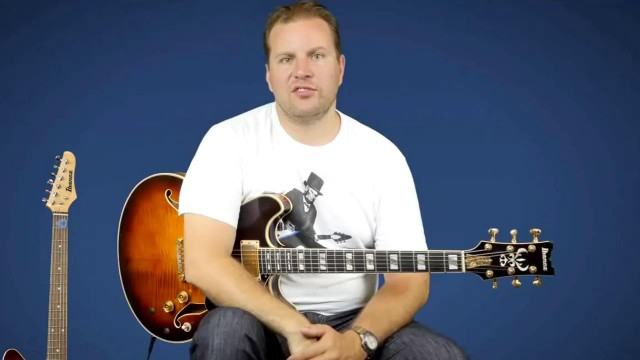Hey everyone! For this tutorial, I want to focus on the fine art of strumming. Throughout my years of teaching, one thing I've found is that many players who avoid taking the time to establish how the right hand executes rhythms, wind up having issues later in their guitar lives. It's extremely important to understand why "strumming patterns" exist, to begin with. These patterns exist to help our strumming arm maintain uniformity and keep our rhythm as defined and exact as possible. In this tutorial, we'll have a look at basic eighth note divisions. Don't understand even the basics of rhythmic music theory? It's all good! We'll break it down in table-form, so you can really understand how up and down motions corelate to rhythm.
So the first thing we need to do, is begin by establishing our four "quarter notes". This means four evenly-spaced beats that we play with down-strokes. (This exercise is demonstrated in pattern 1, below).
At the top of the grid, we see "1 and 2 and 3 and 4 and". The numbers represent our "down-beats"; the "ands" represent the "up-beats". And just as they represent down and up-beats, they represent "downstrokes" and "upstrokes" (the direction of our pick strokes). Any chord that falls on beats "1", "2", "3" or "4", will always be strummed downwards. Any chord that falls on any of the "ands" will be strummed upwards.
One of the number one issues students usually have next, is focusing too much on the direction of the strum, and not so much on the rhythm. So learning how to count these rhythms, say them out loud, clap them, or tap them with your foot is imparitive.
Each down-beat (numbered) column is highlighted in red to emphasize our pulse. Count "1, 2, 3, 4" out loud before attempting any pattern. Leave the "ands" out and just strum "down, down, down, down" at a moderate tempo. This will help establish our timing.
When up-strokes ("ands") are introduced, keep one thing in mind: Your hand naturally makes an upward motion between each down-beat. So, if our rhythm is (#3) Down, Down, Down, Up, Down Up, we strum as if we're still playing exercise 1, except after beats three and four, we strike the strings as we lift our hand. This will produce our rhythm: 1, 2, 3 and 4 and.
Note: From here on in, these quarter notes will never "slow down" or "speed up". This is where the use of a metronome comes in handy.
EXERCISE: Play each pattern as many times as needed and get comfortable with each of them individually. From there, we'll practice playing through the entire thing, from one to the next, without stopping. For demonstration purposes, I'll be playing each pattern, two times.

















